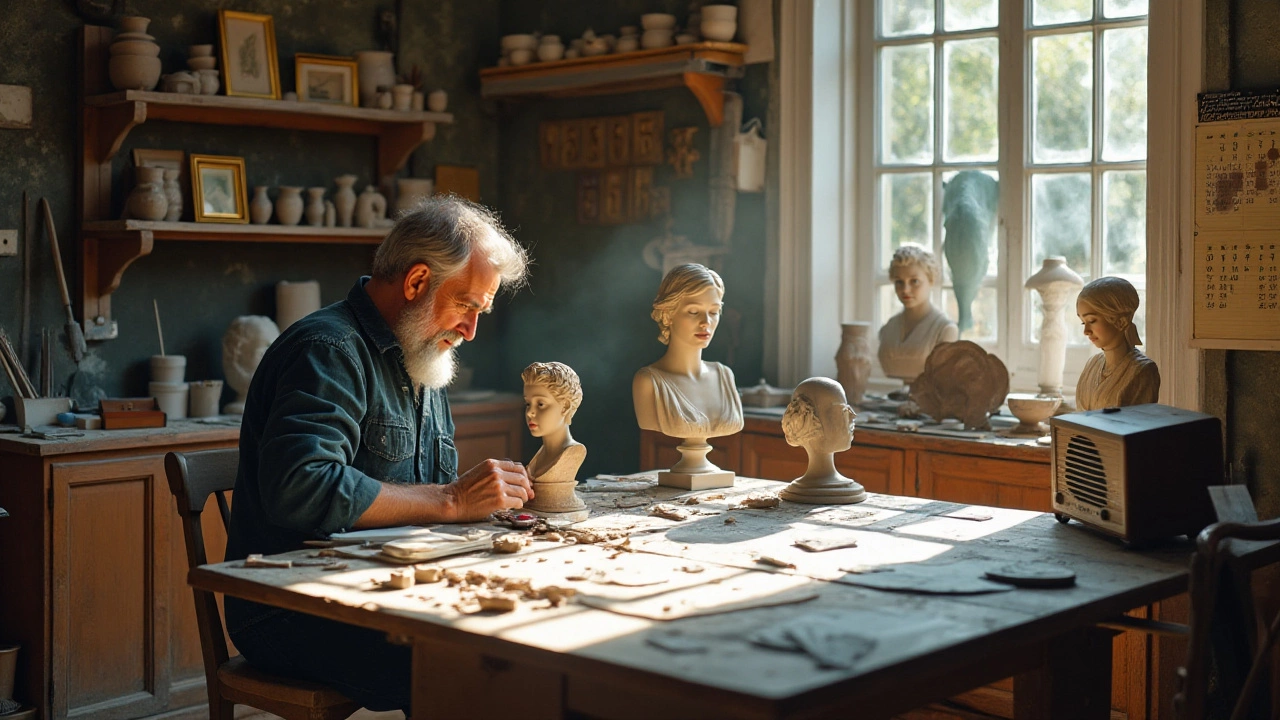Art Valuation: Quick Tips to Price Your Artwork
Ever wonder why a small portrait can sell for thousands while a large sculpture stays on the shelf? The answer lies in how you assess its value. Below you’ll get straight‑to‑the‑point advice that works for any medium – oil painting, sculpture, giclee print, or limited edition.
What Drives an Artwork’s Value
First, think about the artist. A living name with gallery representation commands more than an unknown hobbyist. Provenance matters too – a clear ownership trail adds credibility and can bump the price by 20‑30 %.
Condition is another big factor. Scratches, cracks, or repaired sections lower value, while a pristine piece holds strong. Size, subject matter, and style play roles, but they’re secondary to artist reputation and condition.
Market demand sways numbers as well. If collectors are chasing abstract works right now, an abstract piece can fetch a premium. Keep an eye on recent auction results and gallery sales to gauge where the market’s heading.
Step‑by‑Step Valuation Process
1. Gather basic info. Record title, artist, date, dimensions, medium, and any certificates of authenticity. Having all facts in one place makes the next steps smoother.
2. Check comparable sales. Search auction houses, online marketplaces, and dealer listings for works that match your piece’s size, period, and condition. Note the sold price, not the asking price.
3. Adjust for condition. If the comparable sold in perfect shape but yours has a minor chip, deduct a reasonable percentage – usually 5‑10 % per visible flaw.
4. Factor in provenance. A well‑documented history can add 10‑20 % to the value. If your artwork lacks provenance, be prepared to price it lower.
5. Apply a market trend multiplier. If the artist’s genre is hot, you might add another 5‑15 % on top of the adjusted price. If interest is waning, cut back accordingly.
6. Finalize a range. Give yourself a low, middle, and high estimate. This range helps you negotiate and avoid over‑pricing.
Tools like artprice.com, artnet.com, and even Google Images can speed up the comparable search. For a more formal appraisal, consider hiring a certified appraiser – they’ll provide a written report useful for insurance or resale.
Remember, valuation isn’t an exact science. It’s about blending hard data with educated judgment. Use the steps above as a checklist, and you’ll avoid common pitfalls like over‑relying on a single sale or ignoring condition flaws.
Got a specific piece you’re curious about? Test the process with one of our recent posts – for example, the guide on spotting genuine giclee prints (post #47249) shows how provenance and authenticity can dramatically shift price.
By keeping records, watching the market, and adjusting for condition, you’ll feel confident setting a fair price whether you’re selling, insuring, or just curious about your collection’s worth.

4 Jan 2025
Pricing a sculpture is a nuanced art, intertwining materials, size, artist's renown, and market demand. Every aspect from craftsmanship to current market trends plays a role in determining the worth of unique sculpture pieces. Newcomers to art collecting or even artists themselves must navigate these elements to set or understand fair prices. Having a clear breakdown of these factors assists individuals in making informed decisions.
Continue reading...
